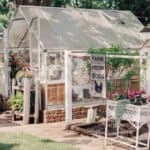The Benefits of Pinching Flower Seedlings
I started my seeds inside beginning in February. The sweet peas were one of the first to get planted.
Now in the last few weeks of April, My seedlings are getting pretty big. I’ve transferred many of them from their seedling starter plugs into larger pots.
To continue caring for my little seedlings, many need to be pinched.
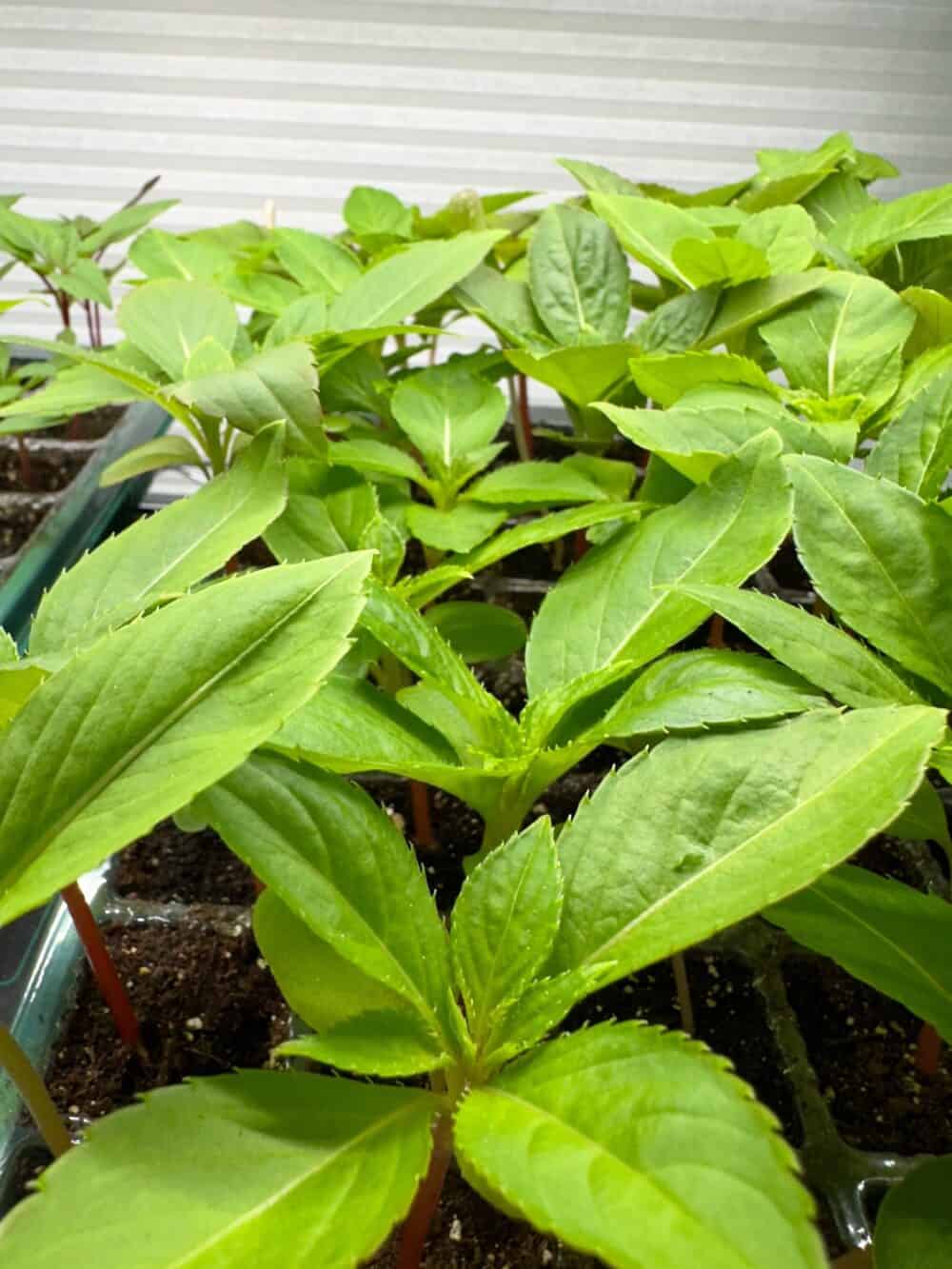
On my blog Living Large in A Small House, I may sometimes use affiliate links, which means a small commission is earned if you make a purchase via the link. The price will be the same whether you use the affiliate link or go directly to the vendor’s website using a non-affiliate link. You can find my full Disclosure Policy HERE
What is Pinching
Pinching is the process of removing the top few sets of leaves or a portion of new growth on a young plant. Ideally, you remove this just above a node. What this does is promote growth out to the sides and create a fuller plant.
You want to make sure you have two to three new leaf growth above the seed leaves. The seed leaves are the first two leaves that are produced by a plant. They aren’t actually leaves; they are called Cotyledons and they are part of the seed or embryo of the plant.


When to Pinch?
When to pinch depends on the plant, but as a general rule, you want to have multiple sets of true leaves before pinching. By having several sets of true leaves, the plant has enough foliage to produce the energy required to promote branching and additional growth. If you pinch too much of the plant, you can potentially kill the seedlings because they won’t have enough foliage to complete the process of growth needed to survive.
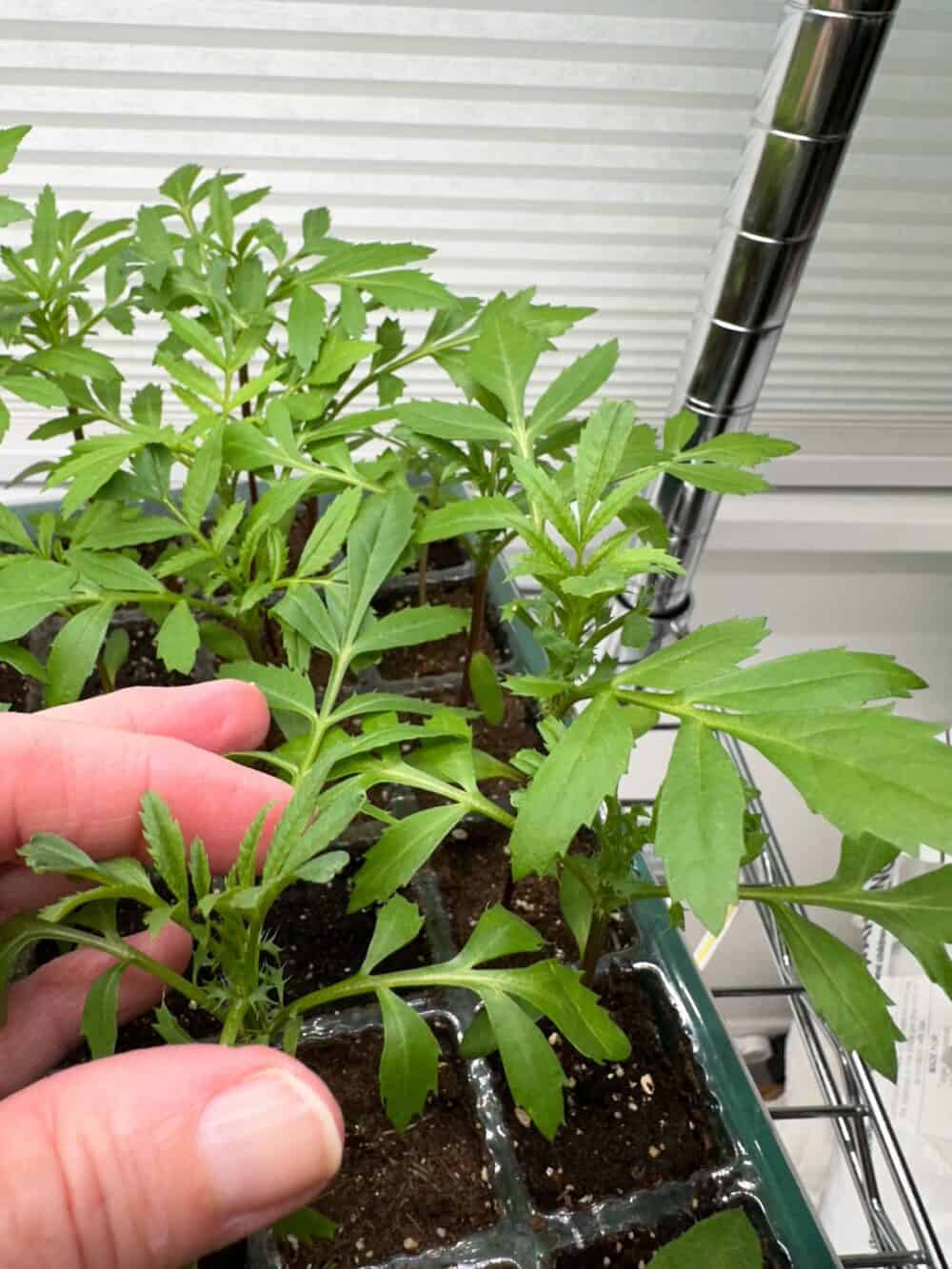
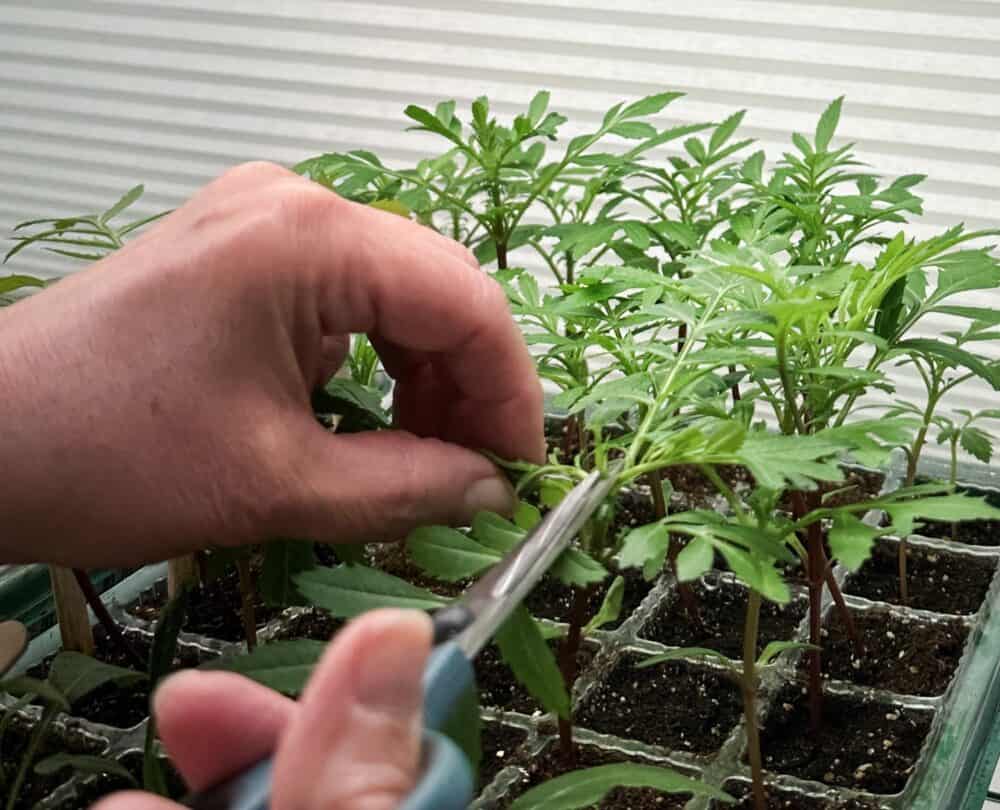
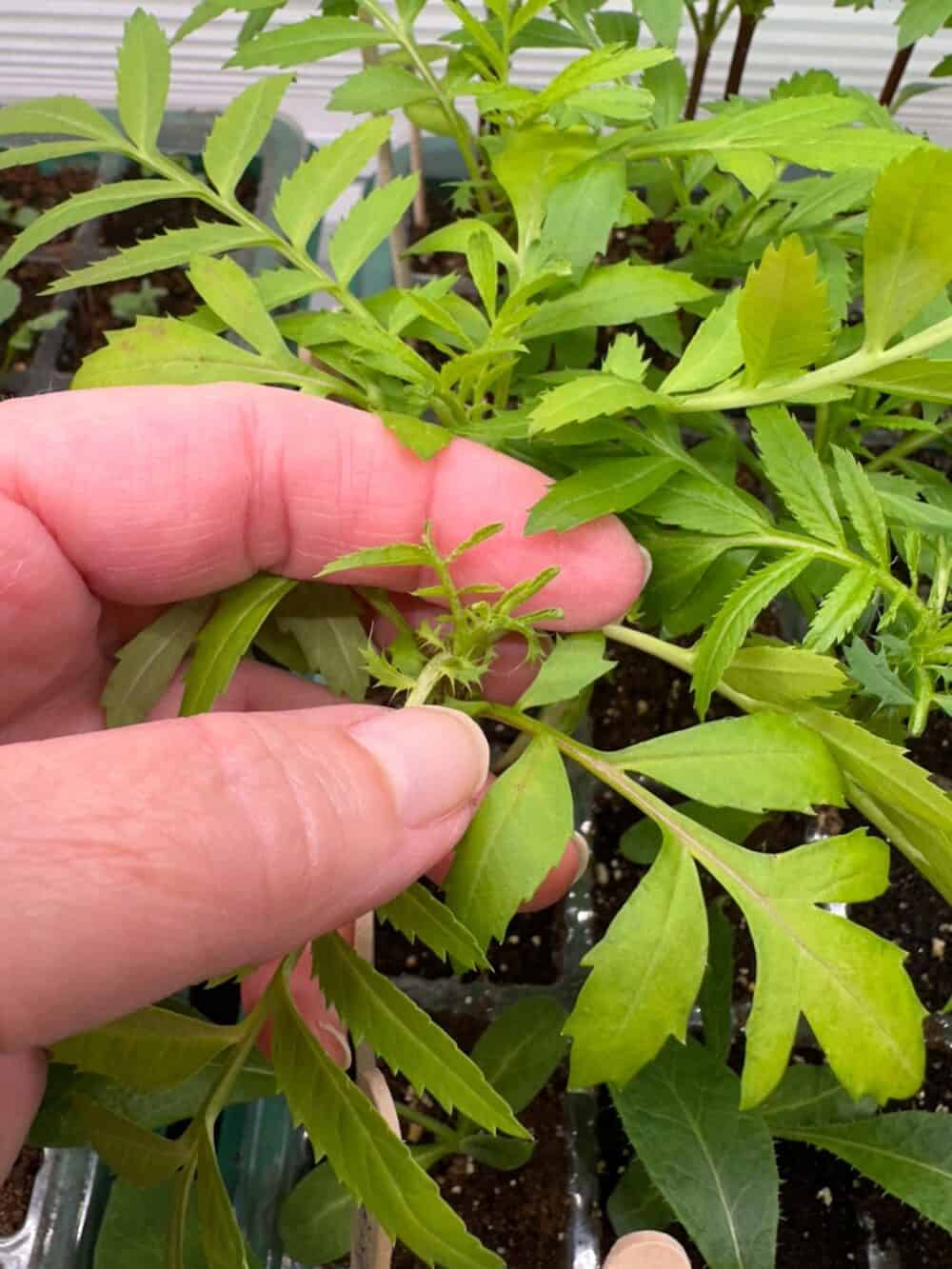
The Seedlings that Benefit from Pinching

Seedling that I Pinch
- Sweet Peas – My sweet peas have been pinched for some time. I pinched a few leaves from the top when they were about 6” tall and there were about 5 sets of leaves. Within a few days, there were two new branches growing from where I had pinched my little plants. I can’t wait to get these into my flower garden and watch them grow up my trellis. These fragrant, delicate blooms just make me smile all summer long. At the end of the season, I collect the seeds from these beauties and will grow more plants next season.
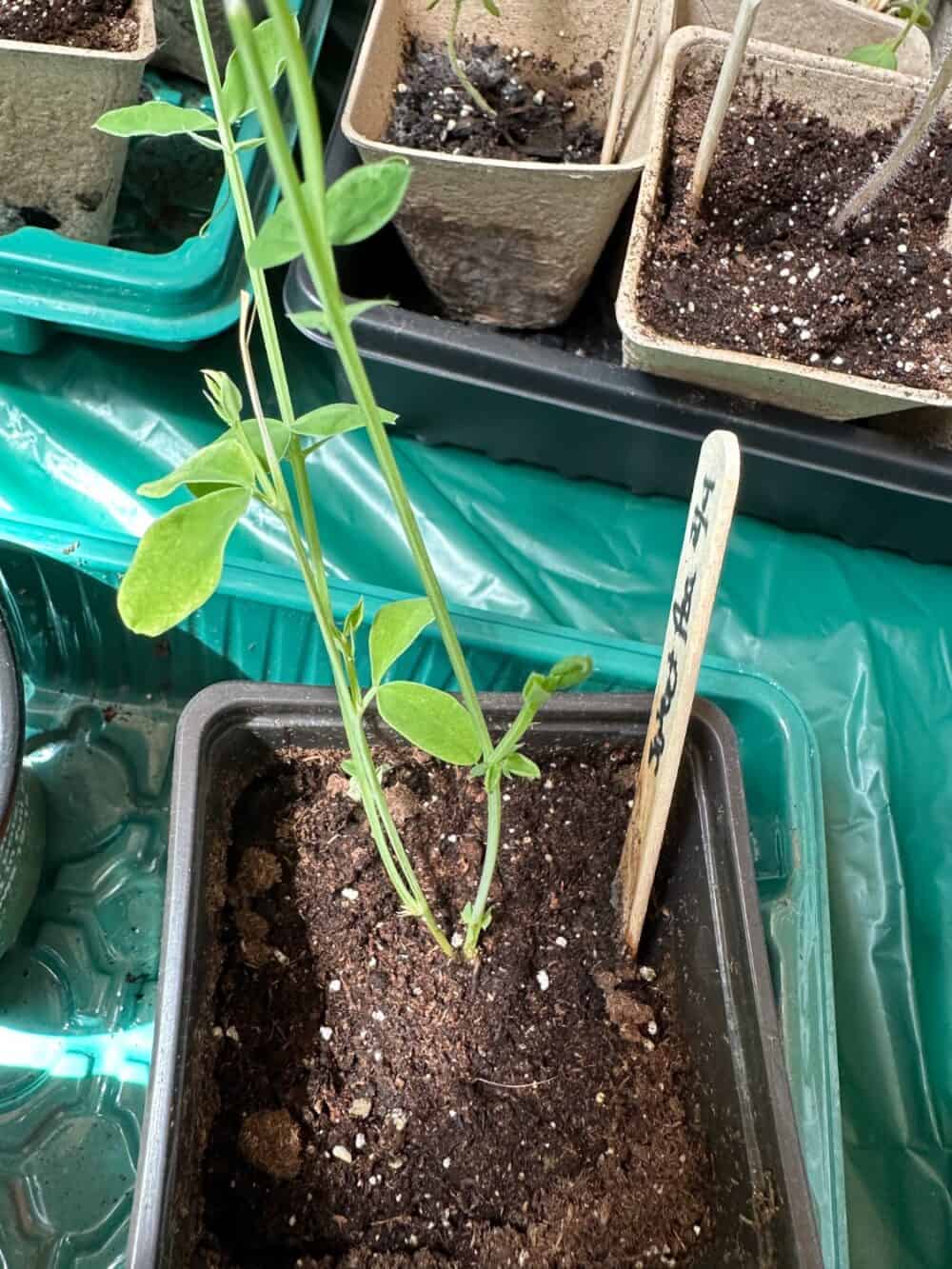

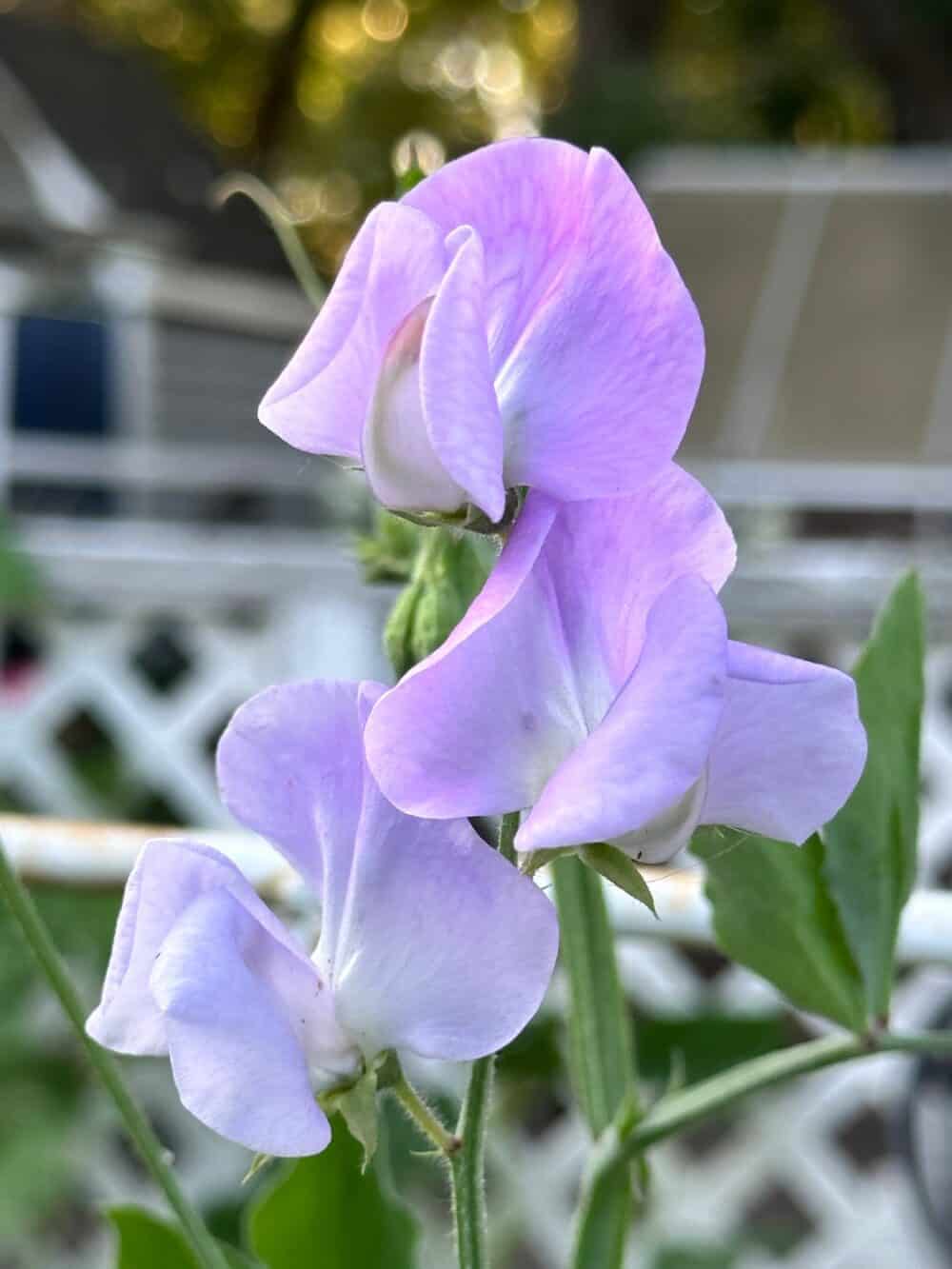
- Snapdragons– This is the first year that I have started my Snapdragons from seed. I won’t technically pinch these seedlings. I want the first flowers to grow tall and bloom early. However, once they flower, I will be cutting them for arrangements in my house. This will then be a pinching of sorts as the plants will start to grow laterally and produce more flowers. If you do decide to pinch your snapdragons when they are seedlings, you can dip the stem of the pinched top and put it into soil and create two plants from one.
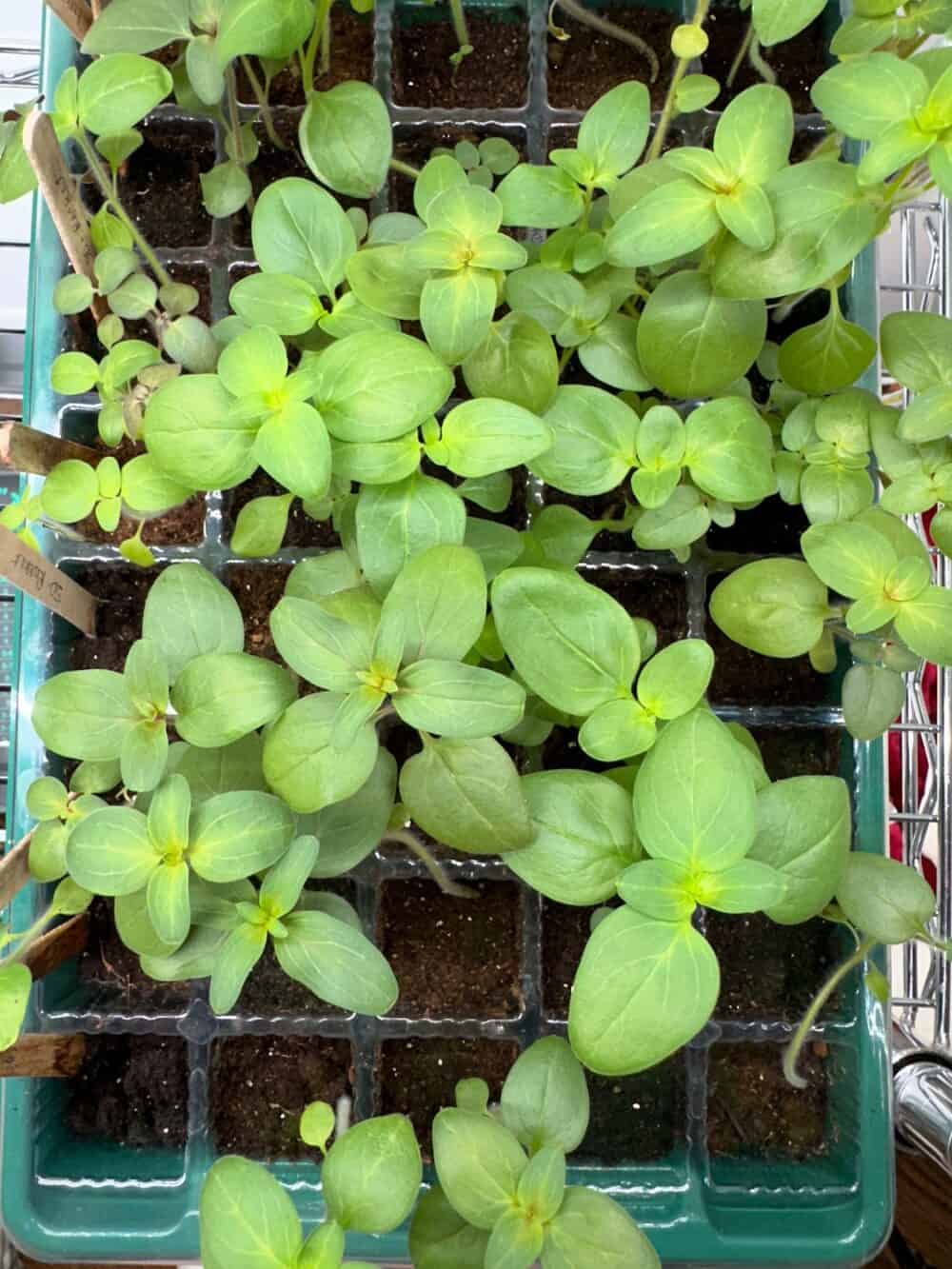
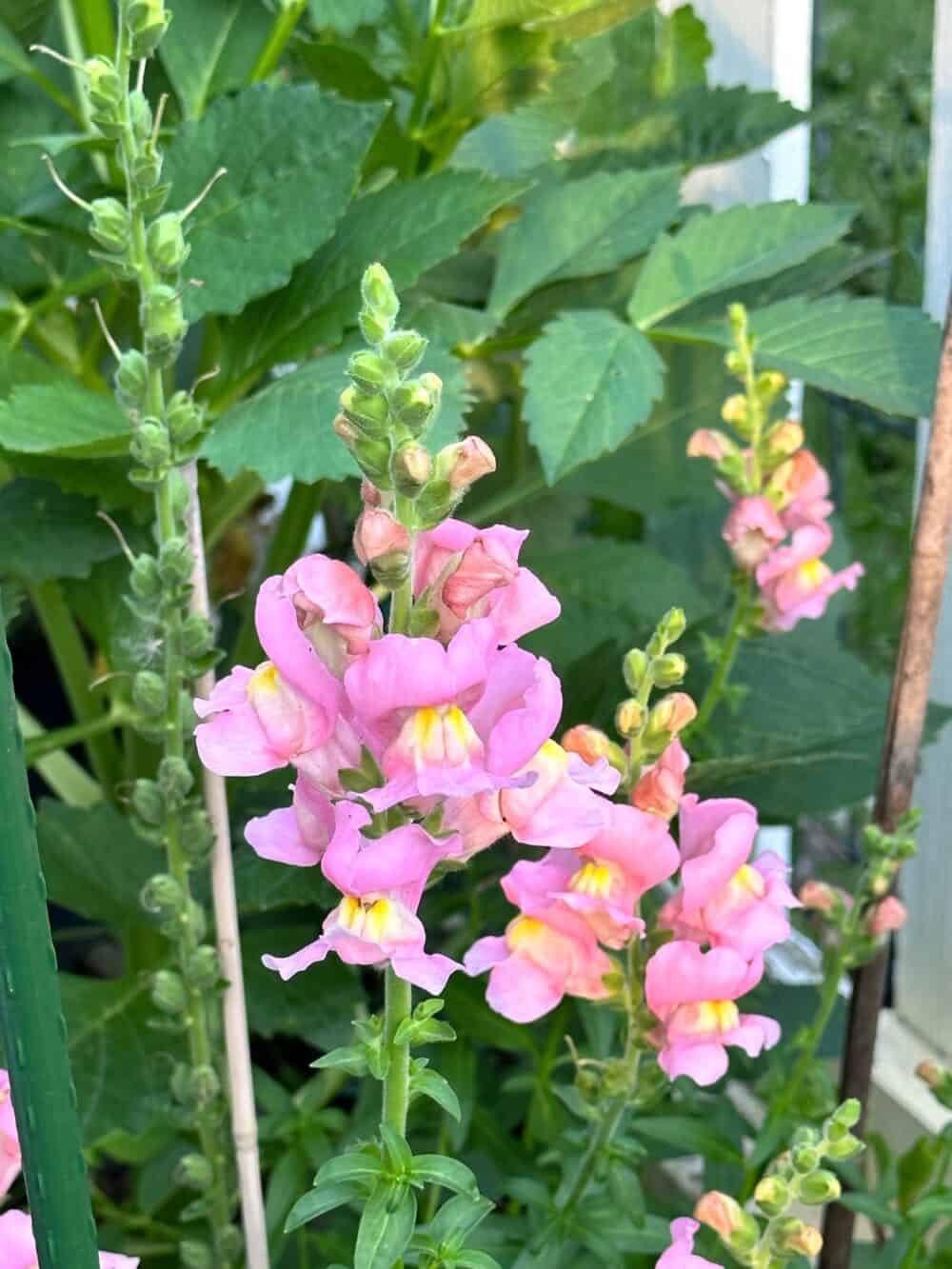
- Basil- While basil isn’t a traditional cut flower, it typically is just used for creating delicious meals., I love to add it to my floral arrangements. Pinching basil is important for creating a healthy full plant. Another basil tip is that you shouldn’t plant it outside until it’s consistently 50 degrees overnight. Basil does not like to get cold and will not survive in cold weather.

- Marigolds – Marigolds are another flower that I’m growing from seed for the first time. Those little plants are doing beautifully. This is a flower where pinching is important to give you a nice big plant. However, if you are just using them as a companion plant then you don’t have to pinch them. I’m going to use my marigolds to not only live in my vegetable garden with my tomatoes, I’m also going to plant them near the plants that my deer family loves. I’ve been told they will help keep them away.

- Zinnias- Zinnias are the easiest plant to grow from seed and a great plant to learn how to pinch because it’s hard to hurt them. I sow my seeds outside after the first frost and they grow to be tall beautiful plants. Once they are about 6-8 inches tall I pinch the inside.

- Celosia – Celosia are plants that are supposed to benefit from pinching, but the varieties that I purchase from Floret are plume varieties and I don’t want to do anything to disturb the fan and brain shapes that they produce.
- Dahlias – Dahlias need a good hard pinch after they have several sets of true leaves. This will help promote branching, and also it helps increase stability in plants that are prone to falling over. I plant my tubers in the ground after the danger of frost has passed. When I pinch my dahlias I check the weather first. When you pinch a dahlia it leaves the stem with an open straw-like area. If rain gets in there, it could damage the plant. I have been known to cover these stems with little aluminum foil caps that I make if rain pops up unexpectedly.
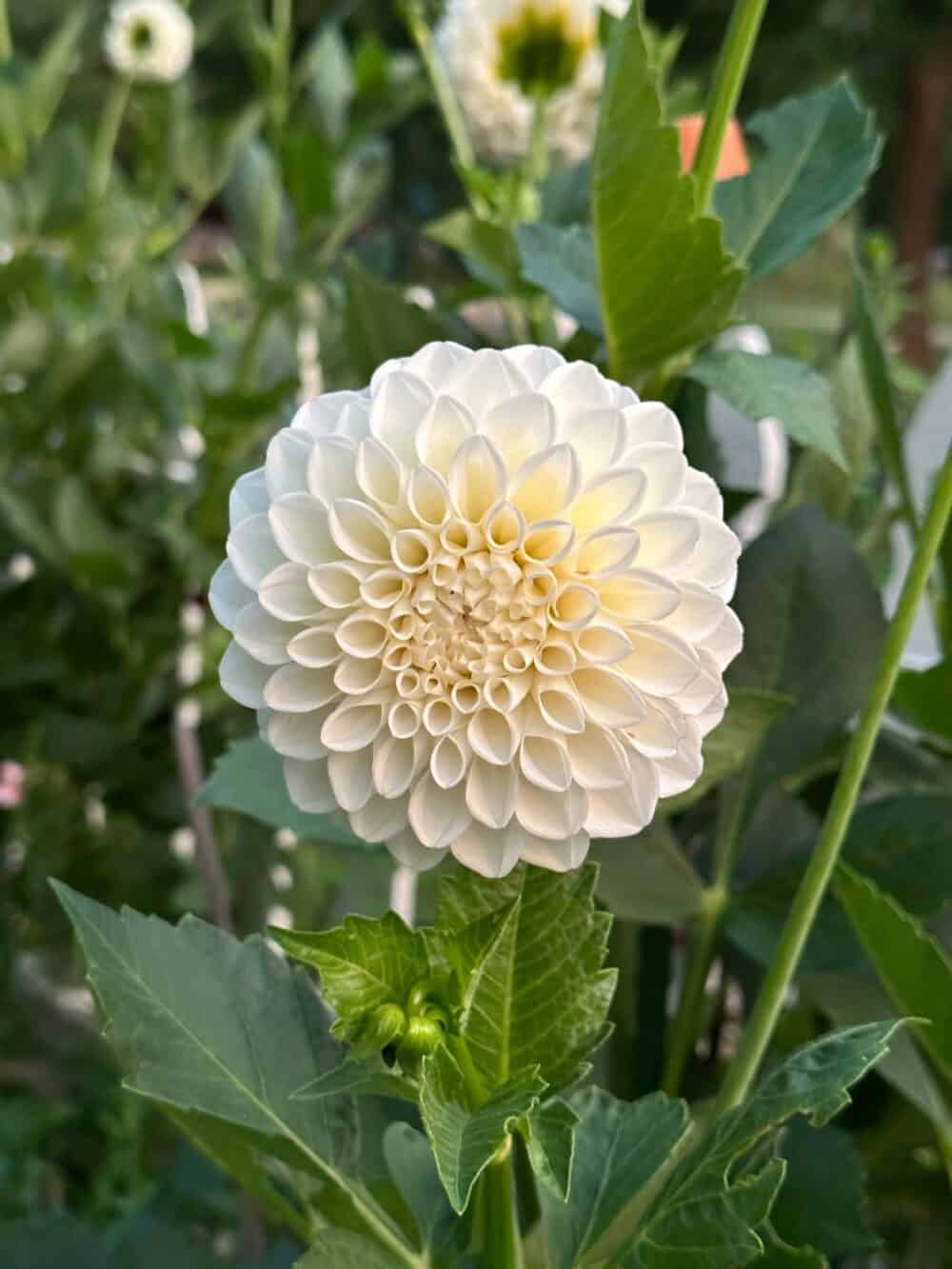
- Impatiens – My impatiens are another plant that for me is easy to grow from seed. My seedlings are strong and healthy and I will be pinching them this week.
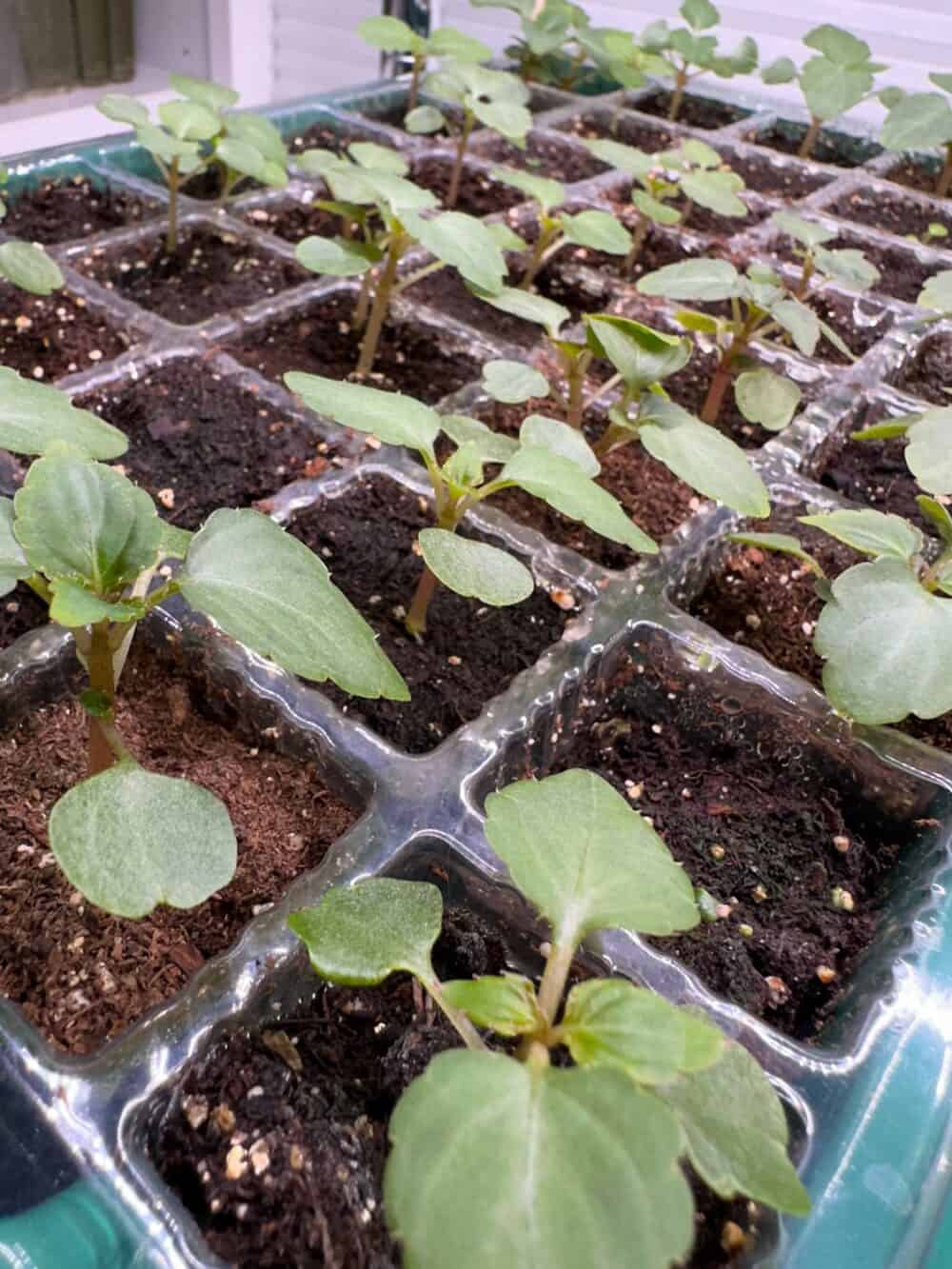
Seedlings that I Don’t Plant
These are other flowers that I don’t start from seed or aren’t starting this year. But they can benefit from pinching.
- Branching Sunflowers – You don’t have to pinch branching sunflowers to get beautiful sunflower blooms, but by pinching these varieties when they have several true leaves, you’ll increase the stem count you can harvest.
- Cosmos – Nobody could ever accuse a cosmos plant of not producing countless bouquets of flowers whether pinched or not! I found that if I don’t pinch these, even when I buy them as a plant they are just too tall and spindly and don’t do well in my garden. However, pinching this plant helps encourage more stability as well as branching. Cutting deep long stems when snipping for cut flowers will help keep this plant upright throughout the growing season.
- Amaranth- Amaranth is a beautiful addition to bouquets and countless varieties from large, tall spikes, to drooping amaranth dreadlocks. All varieties benefit from pinching. If you do not pinch amaranth, the bloom size is far too large and cumbersome in bouquets. I grew these last year and did not pinch them. I will tell you from first-hand experience that the blooms did get extremely large. I also discovered that they reseed so while I will not be planting them this year, I may be the recipient of some plants from last year.
- Coleus – I grew these from seed last year and they were really easy to grow. For whatever reason, I never got them into the ground. They love the shade and I feel like that area of my yard got neglected last year. I still have seeds so I may throw them in a tray this week and see how they do. Like all the other flowers on this list, pinching these allows them to fill out and create a fuller, bushier plant.
- Fuchsias – These are plants that I don’t start from seed nor do I buy them as plants. They love shade and my impatiens are my go-to plant for color in the shade. Fuchsias are much more conducive to baskets.
- Petunias – I have never tried these plants from seed but I do buy the trailing varieties as plants each year. If you are planting them from seed I would love to know if you pinch them or not.
Spring Gardening

While it’s still too early to put flowers in the ground, there is a lot going on at the small house.
My seedlings are doing so well. I had a few duds but I’m keeping notes in my gardening journal.
I’m also busy planning out where all of these plants are going to go and what I have to buy as plants from my local nursery.
I’m ordering my mulch and mushroom compost for the vegetable garden.
My greenhouse is cleaned up and ready to harden off the plants that are in the house. I will start that the first week in May and then they will be ready to plant on May 15th.
Peace and Love,

WELCOME
Meet Me
After years in corporate America, I’ve channeled my interior design degree and passionate creativity into transforming our 1,300 square foot house into a cozy, inviting haven that proves beautiful living doesn’t require massive square footage.
My slight OCD tendencies fuel my love for organizing while my “Handy” husband helps bring my vintage-inspired decorating visions to life in our empty nest, where we entertain, garden, and cook from scratch.
Join me as I share practical wisdom, genuine humor, and professional insights for making the most of every square inch—because I’ve discovered that living large isn’t about the size of your home but how you fill it with style, function, and heart.


Thanks for Following Along
If you enjoyed this post I hope you sign up to be a friend of Living Large in A Small House! Then you won’t miss any of the inspiration that is shared with you each week! You can also follow me on Instagram, Facebook, and YouTube. I share even more inspiration on Pinterest! You can listen to me chat on my Podcast.


A great way to save this article is to save it to your Pinterest boards. You can find the pin button in the top right corner of the photo below. Also, don’t forget to follow me on Pinterest
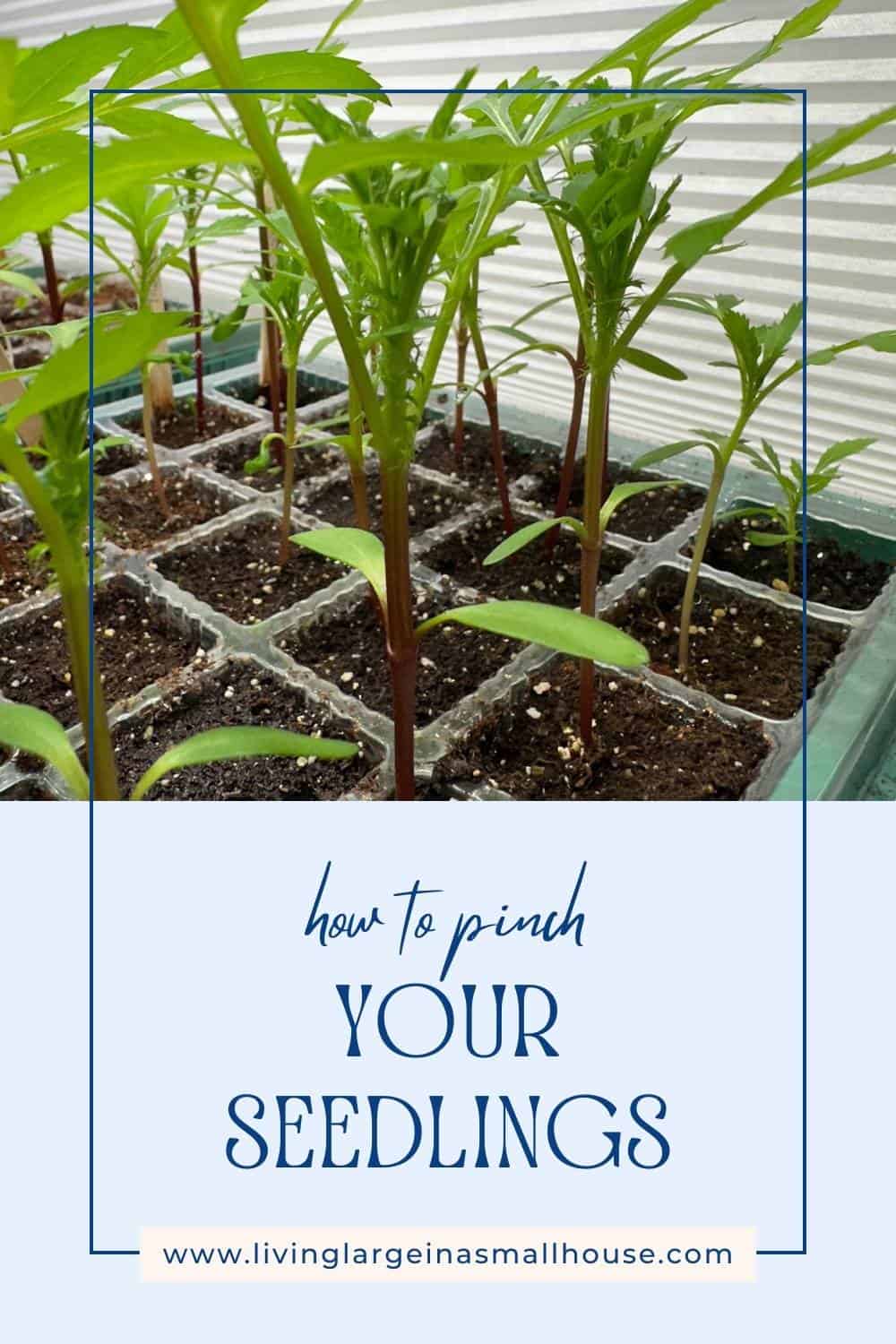



Featured

Web Story




